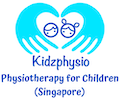Say NO to W-sitting
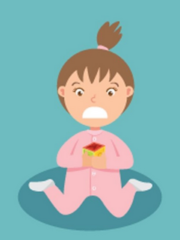
What is W-sitting?
W-sitting is the position some children assume when they are sitting on the ground. They sit on their bottoms, with their legs bent and out to each side in a ‘W’ position.
Why does your child W-sit?
• W-sitting widens the child’s base of support, so it is a very stable sitting position for many children with hypotonia (low tone).
• They find it easier to sit in the “W position” as they do not have to work their core muscles to maintain the upright position.
• There is less need for weight shifting, postural control and stability when they are playing, moving and reaching, compared to other seated positions.
Why is W-Sitting discouraged?
• W-sitting places certain leg muscles like the hip internal rotators, abductors, hamstrings, in a shortened position, and if done consistently, leads to muscle contractures (permanent shortening). This can lead to orthopaedic problems and affect balance and coordination.
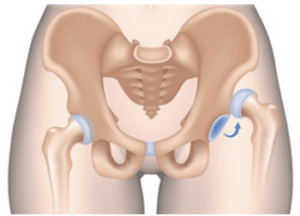
Hip dislocation
• Hip dislocation: W-sitting places the hip joints in extreme internal rotation. If a child has hip problems, this increases the likelihood of hip subluxation/dislocation.
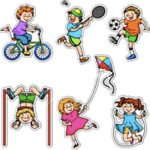
Advanced motor skills
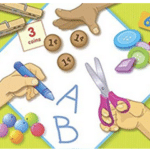
Fine motor skills
• Decreased core activation: The wide sitting stance of the W position makes it easier to keep the body upright. Children sitting in a W position don’t have to use their core muscles as much and won’t develop them as they would in other sitting positions. This leads to weak core muscles as they grow and should therefore be discouraged. Strong core muscles leading to good postural control and stability are also important to develop more advanced motor skills and good bilateral hand use.
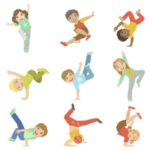
Cross body movements
Intoeing / Pigeon toed
• Lack of cross body movements: The W position makes it difficult for children to rotate their upper bodies and reach across to either side with both arms. This may impair your child’s ability to integrate the right and left sides of their body, leading to poor coordination.
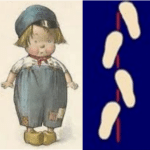
• Pigeon-toed or in-toeing walking pattern: W-sitting may delay the natural bony correction of the legs that occurs with growth and development. Increased hip internal rotation, together with decreased hip external rotation and weak hip muscles can result in in-toeing / pigeon-toed walking pattern.
How can I prevent W-sitting?
• It is best to prevent children from developing this habit. However, we all know children who have already established this as a preferred seated position. When possible, anticipate and catch it before you see your child move into a “W-sit”. If you see your child w-sitting, encourage your child to adjust to a different position by saying, “Fix (Correct) your legs.” Consistency is key.
• Teach your child alternate sitting positions. Some better alternative floor sitting postures that will allow the child to develop trunk control and mature movement patterns include:
–Cross leg sitting
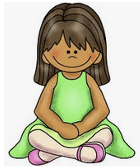
–Side sitting (alternate sides)
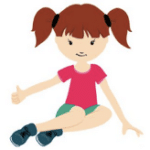
–Long sitting
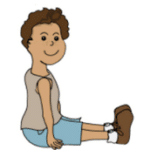
Parents can teach and encourage alternative seated positions at home, and teachers can teach and encourage their students to use alternate seated positions at school. This encouragement will have positive effects on a child’s growth and development of motor skills. If a child is unable to sit alone in any position other than w-sitting, it might be useful to sit using a small chair and table while playing.
–Sitting on a low stool, chair
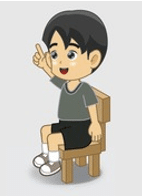
• When a child is kneeling or crawling, assist your child to hold his knees and feet closer together. It is more difficult to get into the w-sitting posture when the legs are prevented from spreading apart. The child will either side-sit or sit back on his feet, and from there he can be helped to sit over to one side. Try to encourage sitting over both the right and left sides to promote bilateral development. Using various patterns of movements and positions demand trunk rotation and lateral weight shifting.
• Encourage gross motor activities/games that will build up core strength: crawling, climbing, jumping, obstacle courses, playground.

Playground play
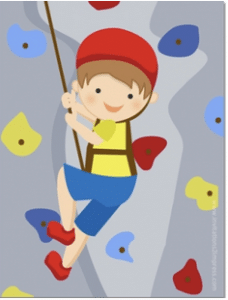
Climbing
Crawling
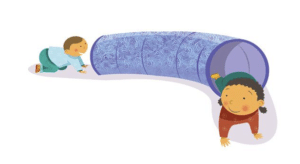
Jumping
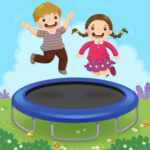
When should I seek help?
If your child frequently W-sits and you notice any of the following:
•is unable to sit independently in any other position
•walks with a limp
•walks with an in-toeing walking pattern
•has weakness in the legs
•has low muscle tone or weak core strength
•has trouble with fine motor tasks
•seems clumsy/uncoordinated
Please feel free to reach out to us for other ideas to encourage better sitting postures for your child.
Let's get in touch
